Adhesive capsulitis also known as frozen shoulder, is reflected in the loss or difficulty in shoulder motions. It is triggered by an inflammation of connective tissues of joints of the shoulder. Later connective tissues will grow together with adhesions (abnormal bands of tissue). This will result in a constant pain and loss of motion. It is believed frozen shoulder is more frequent in patients with past history of thyroid disease of diabetes, as well as in middle-aged women.
Causes
However, the real cause of adhesive capsulitis is still unknown to doctors, as with many other diseases of complex nature, it can be related to an autoimmune response, as it is very common after some stress occurrences and such diseases as diabetes, degenerative arthritis, circulatory or heart diseases and/ or hormonal conditions in patients. It is also not rare after some sort of injuries or surgeries, suggesting the brain send a signal to the one’s immune system to attack already healthy tissues.
Symptoms
There have been discovered a total of three stages in the disease development. The duration of each stage is 3-4 months. Initially a patient will find it painful to move a shoulder and difficult to find a comfortable sleeping condition. Next, the pain can weaken, but here comes the restricted motion. Last stage is defined as an improvement in both pain and motion conditions.
Siddha and Ayurvedic approach
Siddha and Ayurveda call this condition “apabahukam” and related it to the vitiation of Vata dosha. A combination of external treatments, such as those constructing the Panchakarma complex, will be administered to patients. Panchakarma includes Ayurvedic oil massage (Abhyangam), steam bath (swedanam), Nasyam (nose oil treatment), Vasti (herbal enema), Elakizhi and Pizhichil. Internal (oral) intake of kashayam and/or arishtams, aiming to detoxify and balance Vata, should be prescribed to those with conditions. Any Panchakarma course should be taken for a minimum of 10 days with herbal medicine intake for several months. This is always accompanied by a diet, recommended by a Vaidya/doctor, a patient is strongly advised to follow the prescribed diet, along with Panchakarma and medicine intake. This component of disease treatment is very crucial in any disease curing process, as the aim of Ayurvedic treatment is to flush out toxins of a body and restore an initial doshas balance. Yoga or exercise regimen will also assist in diminishing the frozen shoulder condition. You should also avoid stressful situations, follow a healthy daily regimen (sleep, eat, work and rest on time). It should be noted that frozen shoulder almost in all the cases will go away by itself. However, the condition is very painful and uncomfortable and can significantly reduce one’s normal daily routine while creating the basis for further health conditions such as lack of sleep induced autoimmune disorders, thus, it is beneficial to treat it at its earliest occurrence.

